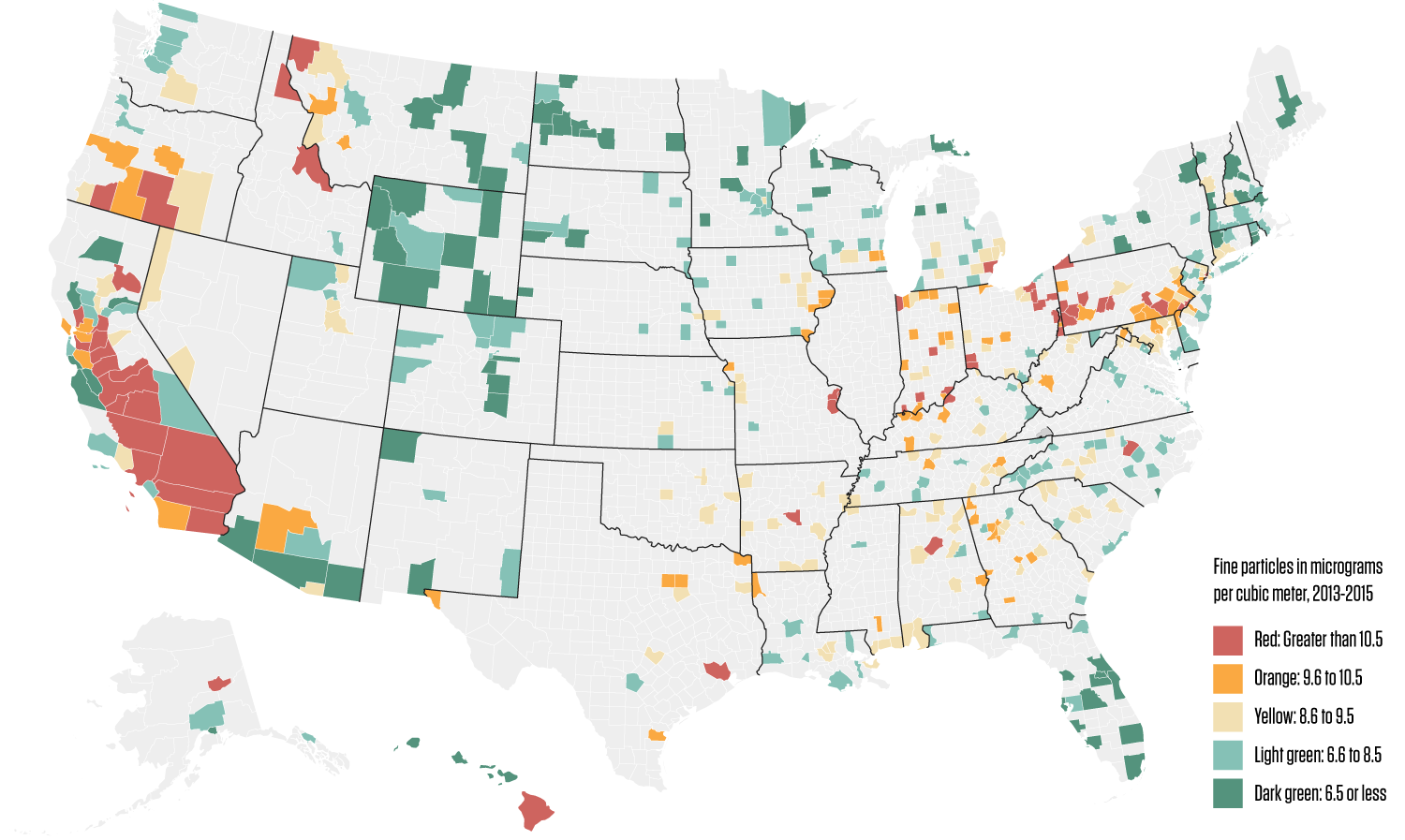Industrial air pollution — bad for people's health, bad for the planet — is strikingly concentrated in America among a small number of facilities like those in southwest Indiana, according to a nine-month Center for Public Integrity investigation.
The Center, which merged two federal datasets to create an unprecedented picture of air emissions, found that a third of the toxic air releases in 2014 from power plants, factories and other facilities came from just 100 complexes out of more than 20,000 reporting to the U.S. Environmental Protection Agency. A third of the greenhouse-gas emissions reported by industrial sites came from just 100, too. Some academics have a name for them: super polluters.
Twenty-two sites appeared on both lists. They include ExxonMobil's massive refinery and petrochemical complex in Baytown, Texas, and a slew of coal-fired power plants, from FirstEnergy's Harrison in West Virginia to Conemaugh in Pennsylvania, owned by companies including NRG Energy and PSEG. Four are in a single region — southwest Indiana. Together, owners of these 22 sites reported profits in excess of $58 billion in 2014.
Thomas O. McGarity, a law professor and regulatory scholar at the University of Texas at Austin, said the Center's findings show that "a lot of the problem is isolated, and what we need to do is focus in on these plants."
The EPA says it's doing that. In a written statement, the agency said its sustained emphasis on the electric power sector has led to "dramatically" lower emissions from power plants since 1990 — "while the U.S. economy has continued to grow" — and it is working to get further improvements.
But not all the states are on board. Indiana is one of 27 suing the EPA over its Clean Power Plan, which would require reductions in climate-altering greenhouse-gas pollution from electric utilities. Indiana is also among the states that tried to block a federal rule to reduce emissions of dangerous metals and acid gases from coal- and oil-fired power plants. Its governor, Mike Pence — Donald Trump's running mate — is a pro-coal, climate-change skeptic who says the costs of shifting to cleaner energy sources are too high.
Maintaining the status quo has costs as well: bad air that threatens health and fuels global warming. More toxic pollution from utility coal plants was sent into the air within 30 miles of Evansville than around any other mid-sized or large American city in 2014, a Center analysis shows. That same 30-mile radius accounted for the most greenhouse gases released by U.S. coal plants that year around any city.
Across the country, the top 100 facilities releasing greenhouse gases — almost all of them coal plants — collectively added more than a billion metric tons to the atmosphere in 2014. That's the equivalent of a year's worth of such emissions from 219 million passenger vehicles — nearly twice as many as the total number registered nationwide.
The top 100 for toxic air emissions vented more than 270 million pounds of chemicals in 2014. The vast majority of these chemicals have known health risks, according to the EPA; they can target the lungs, the brain or other organs, and some can affect the development of children born and unborn.
Eight of the super polluters have closed. The rest, including all four in Indiana, still operate.
Tina Dearing, 48, from Huntingburg, Indiana, was unexpectedly widowed in March when her 57-year-old husband died of a heart attack. Coronary artery disease, the death certificate says. Two months later, researchers published the results of a 10-year study that showed why previous investigations kept finding shorter lifespans in areas with poorer air quality: pollution appears to accelerate harmful deposits in the arteries that cause nearly all heart attacks and most strokes.
See top polluters at source: https://www.publicintegrity.org/2016/09/29/20248/america-s-super-polluters